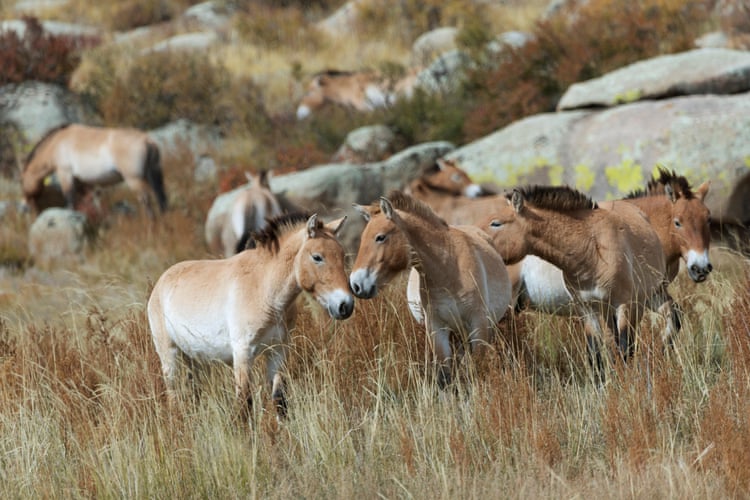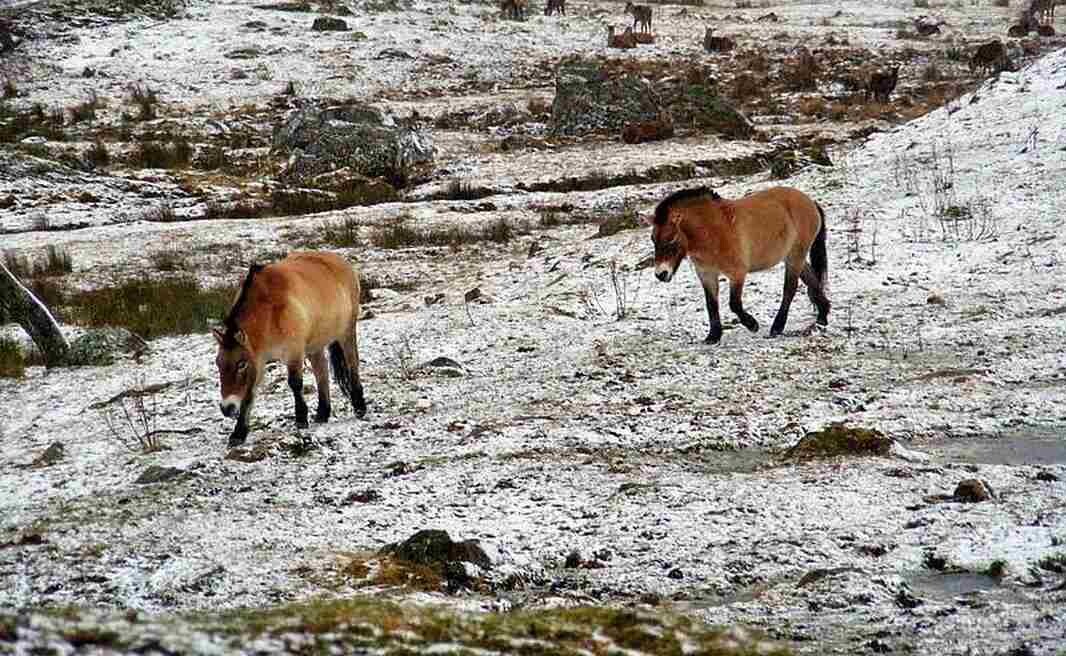More than 5,000 feral horses have been culled since the recommencement of aerial shooting in the Kosciuszko national park, with the NSW environment minister, Penny Sharpe, describing the number as proof of the need to control the threat the animals pose to the alpine wilderness.
Conservationists said for the first time the number of horses removed from the park would exceed the annual growth in horse populations, giving hope that a major threat for under-pressure ecosystems was starting to be addressed.
Data released by the Minns government this week shows 5,539 horses have been killed since aerial shooting resumed late last year.
A further 427 horses were removed through other methods, such as trapping and rehoming and ground shooting, since the last population surveys in October, which estimated the number of feral horses in the park had ballooned to 17,000.
“The numbers speak for themselves. There have been simply too many wild horses in Kosciuszko national park,” Sharpe said.
“The NSW government is delivering on its commitment to protect and restore our environment, and I am sure we will soon see the benefits for our native plants and animals as well as our precious alpine ecosystem.”
The data was presented this week to a state upper house inquiry into feral horses amid ongoing debate about management approaches, with a handful of politicians opposed to aerial shooting.
Under NSW law, the government must reduce the number of feral horses in the park to 3,000 by 2027.

According to the new figures, 8,505 have been removed from the park since November 2021, most of that in the past seven months as a result of the aerial shooting program.
The Invasive Species Council’s advocacy director, Jack Gough, said the council’s own analysis of the government’s publicly available data suggested more horses had been removed from the park in the past 11 months than in the previous 21 years combined.
“For the first time the number removed exceeds annual population growth, meaning we can expect a genuine reduction in the number of feral horses in the national park,” Gough said.
“Of course there is still a long way to go before our native wildlife will finally be safe and can recover from years of damage.”
He said no one liked to see animals killed but the “sad reality” was a choice had to be made between urgently reducing the numbers of feral horses or accepting the destruction of sensitive alpine rivers, and the decline and extinction of native animals.
Gary Dunnett, the chief executive of the National Parks Association of NSW said years of delays and inaction on the problem “have meant thousands more feral horses have had to be killed as the population has grown out of control”.
Last year the federal threatened species scientific committee warned that feral horses could be “the crucial factor that causes final extinction” of six critically endangered animals and at least two critically endangered plants and said urgent action was necessary.
During this week’s parliamentary hearing Sharpe held up a poster of a broad-toothed rat, a species that recently had its conservation status changed to endangered because of large population declines.
Habitat destruction caused by horses is one of the key threats to the species, along with fire and climate change.
Jacqui Mumford, the chief executive of the Nature Conservation Council of NSW, said the improved feral horse control measures “gives our precious alpine ecosystems a chance to bounce back”.
“Feral horses in Kosciuszko national park have pushed dozens of threatened flora and fauna species to the brink after their numbers spiralled out of control, including the iconic corroboree frog, the broad-toothed rat and rare alpine orchids,” she said.
This article by Lisa Cox was first published by The Guardian on 25 May 2024. Lead Image: Brumbies or feral horses on the plains above Kiandra in the Kosciuszko national park. Photograph: Mike Bowers/The Guardian.
What you can do
Help to save wildlife by donating as little as $1 – It only takes a minute.






Leave a Reply